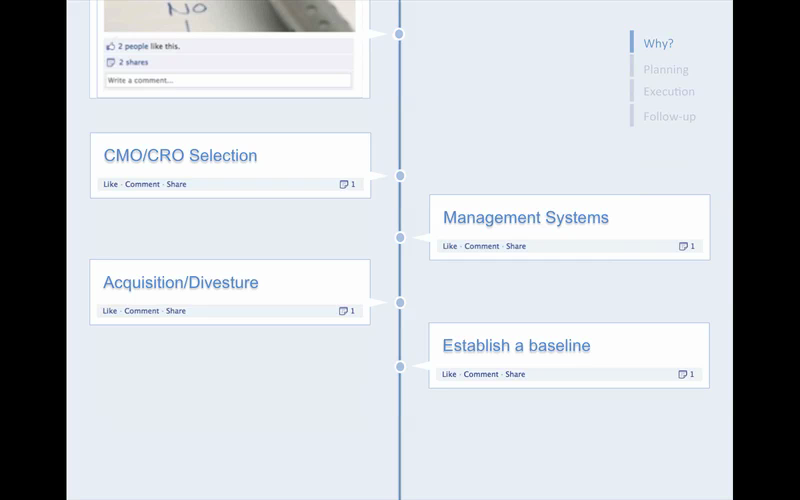Biopharma EHS Podcast Episode #12
Description
BioPharma EH&S Podcast Episode No. 12. Saturday, March 5th, 2011 and we have so much to talk about today, so I’m going to get right into it.
First off, I’ll briefly cover what we talked about last time in episode number 11
Main topic for today :“Creeping Featurism in Environmental, Health and Safety software”, which I’m quite certain sure will stir up some controversy.
Last time in Episode 11 we discussed the topic of “The Evolution of EHS Compliance and Operational Risk Management Software.” Unfortunately I don’t have time to cover all the details today, but basically we covered the history of compliance software systems and tools, and where the future of EHS software is heading. If any of that sounds like something that might interest you, I would suggest you go back to episode number 11 and listen to the whole thing.
Let’s now get into our main topic for today which is
“Creeping Featurism in Environmental, Health and Safety software”
As many of you know, this past week I was in San Antonio, Texas at the National Association for Environmental Management’s Management Information Systems conference. At this conference, there were numerous presentations by companies that have recently gone or going through the process of implementing an environmental, health and safety management information system. In general, the presentations were good and the organizers did a great job of keeping everything on track, but as with most conferences, the best part of the conference was the excellent conversations in the hallway with your peers and colleagues, and the opportunity to meet new people. However, as I thought about the presentations more, in some respects, I would like to see a presentation style similar to the DEMO conference. Most of you listening to this podcast probably have never heard of DEMO, but DEMO is conference that is held twice per year, where technology developers are selected to showcase their latest technologies in front of venture capitalist, the technology media, and other technology interest groups. DEMO is a pay to present type of conference and their presentation requirements are fairly unique – there is no Powerpoint allowed, and you have to use a “live” system not an install that on a local machine, and you get a very short amount of time to show what your system does – I believe it’s six minutes. This style of presentation places a lot of pressure on the solution providers to make sure that their systems are clean, fast, and easy to explain. “Bloatware” will not survive this kind of presentation style. I will put a link to the DEMO conference website in the show notes.
However, backed to the conference in San Antonio, based on the presentations of the environmental, health and safety software that I saw, I have the following observations.
- First off, everybody seems to want a “comprehensive” systems that will do everything. They want it to handle everything from accident reporting to industrial hygiene, from carbon footprint reporting to sustainability reporting. But despite what the solution providers will tell you, this dream system doesn’t really exist, at least not in an off the shelf version. Solution providers tend to be reacting to perceived customer needs and keep adding module after module. While this may provide the impression of comprehensiveness, I might mention that with all this increased “comprehensiveness” comes a significant increase in “complexity” of user interfaces. Based on the seven or eight systems that I saw during my two days in San Antonio, most of the user interfaces were very, very cluttered.
- The second observation or take home point was, and as I believed as one of the speakers stated, make sure that your people understand that an environmental, health and safety management system, or EMS, is not about the software or your management information system. In other words – an EMS is not equal to MIS. The software is just a tool to support your EMS.
- The third observation was, understand that “configuration” does not equal “customization”. Much of the costs of implementing an environmental, health and safety software solution arise when the company insists that the system have certain features that are unique to their company. If you want to keep costs down and ensure rapid implementation - get a system that is easily configurable and works “off the shelf”. As soon as you start demanding customization, expect the costs to go up significantly and the time for implementation to get much longer.
- And finally, the fourth observation was that these comprehensive systems are pricey. If I recall correctly, at the closing presentation, based on a survey of its members, the typically budget for an EH&S-MIS system was somewhere between 100 thousand to 500 thousand per year.
So there you have my four observations 1) Everybody wants a comprehensive system that is off the shelf, 2) EMS is not equal to MIS, 3) configuration does not equal customization, and 4) comprehensive systems are pricey.
So if you’re considering selecting and implementing an EHS-MIS, I’d like to propose that you ask yourself several questions.
The first question you need to ask yourself is “Where’s the value?” When scoping out a system keep a laser like focus on the value rather than the features or comprehensiveness. Make sure that you are creating something that serves a real business outcome and not creating “bloatware.” From my perspective, companies are attempting to track too many things that really don’t advance the value of the company. And when I talk about “value” I don’t necessarily just mean economic value. In one presentation, I believe the presenter indicated that when they scoped out the user requirements they initially came up with 24 health and safety tracking requirements, and 34 sustainability requirements. Ask everyone “where are the value added measurements?” Which of these measurements are critical for reducing operational risk, improving the profitability of the company, or reducing significant amounts of pollution or wastes?
Ask yourself “What is the end user really willing to do?”When scoping out user requirements for an environmental, health and safety management information system be very careful when listening to the end user. In other words, don’t listen to what they tell you - watch what they do. Instead of asking what they want, ask what they are they willing to spend their valuable time and money on. The end user always, always wants ultimate flexibility. They want corporate colors and font, the ability to move the field input box from the left to the right, the ability to sort environmental, health and safety data by every possible way, draw every possible graph, and add custom fields at their leisure. Please understand, that while all of this is very doable, it does come at a cost. So, instead of asking about what features or requirements they want, ask them if they are willing to stay at work till 7:00 each Friday night of every week entering this data.







